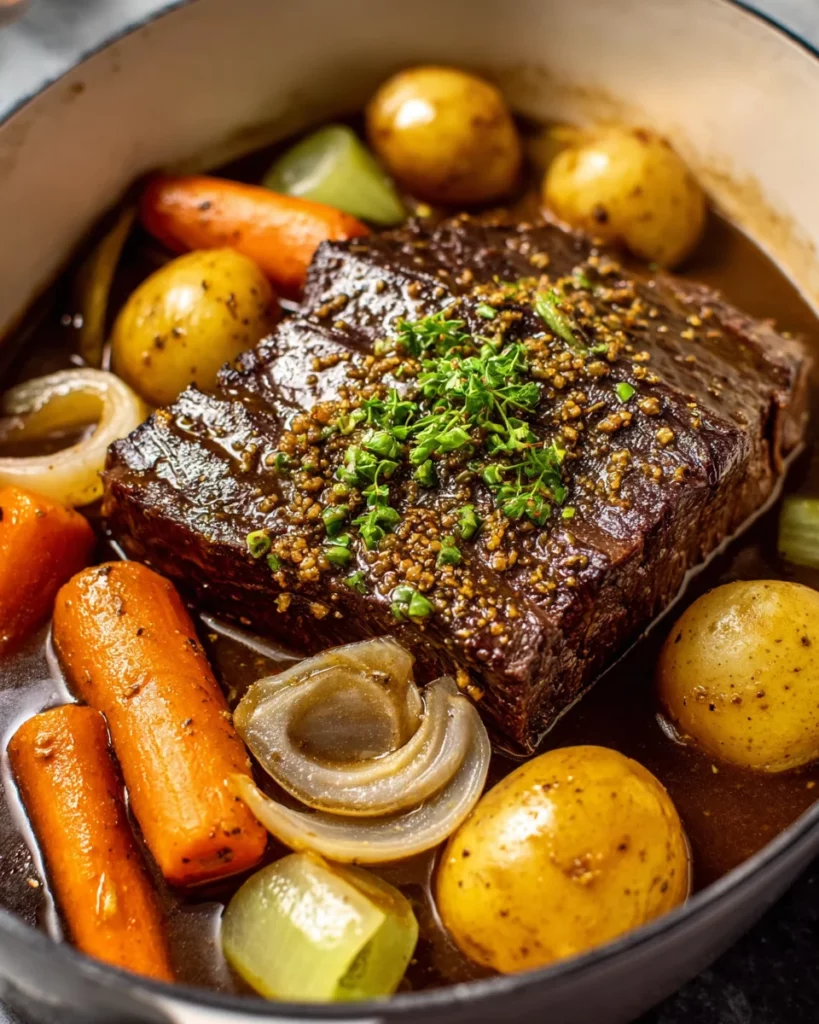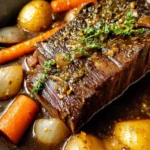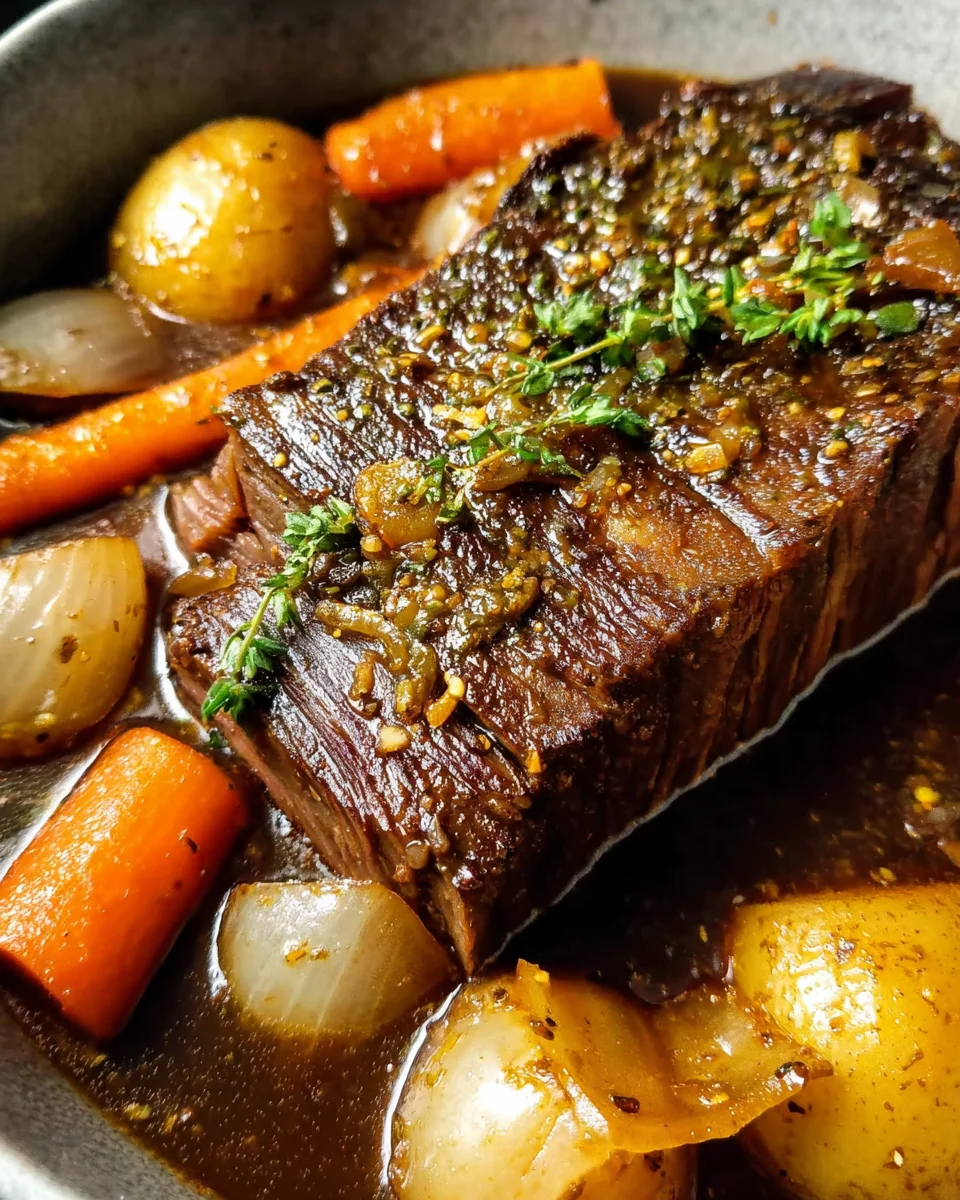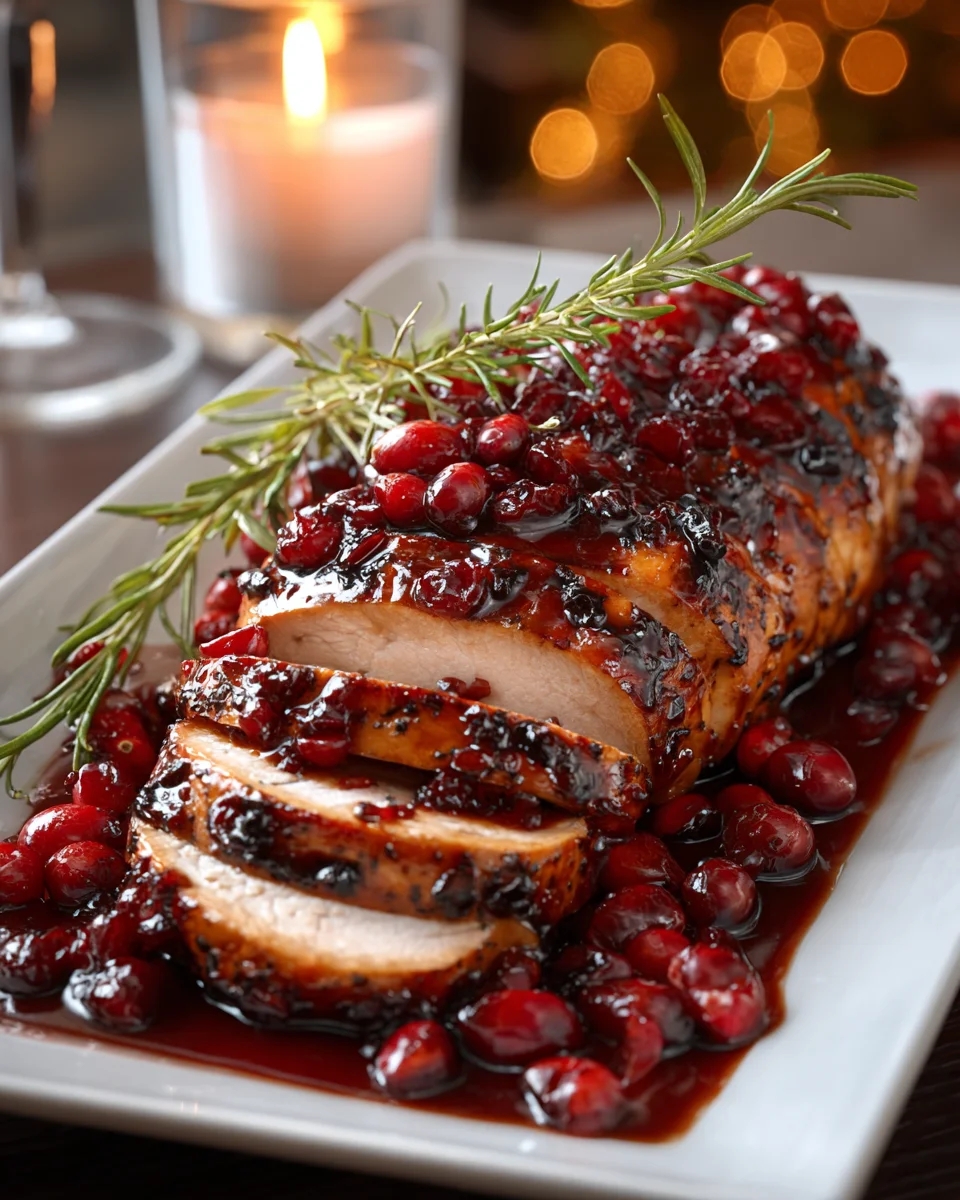Introduction to Sauerbraten German Pot Roast
Ah, Sauerbraten German Pot Roast! Just saying it brings back fond memories of my family’s hearty dinners. This dish is more than just a meal; it’s a comforting hug on a plate. Imagine coming home after a long day and being welcomed by the mouthwatering aroma of marinated beef simmering in a rich gravy. It effortlessly impresses your loved ones and warms the soul. Plus, with just a bit of planning, it fits perfectly into a busy schedule, making it a fantastic choice for Sundays or any day when you crave something special!
Why You’ll Love This Sauerbraten German Pot Roast
This Sauerbraten German Pot Roast is a delightful dish that brings ease to your cooking routine while delivering an explosion of flavor. It’s perfect for busy moms like me, effortlessly combining convenience with a gourmet touch. With just a little preparation, you can wow your family with tender, juicy meat and a savory sauce that tastes like it’s been simmering all day long. It’s truly a simple yet impressive meal!

Ingredients Sauerbraten German Pot Roast
Gathering the right ingredients is key to the magic of Sauerbraten German Pot Roast. Each component joins forces to create a dish that is bold and aromatic. Here’s what you’ll need:
- Red wine vinegar or mixture of red wine and vinegar: This tangy liquid is the heart of our marinade, providing depth and zing.
- Water: Helps balance the tanginess of the vinegar for a smoother marinade.
- Onion: A slice of onion adds richness and sweetness as it mellows during cooking.
- Carrots: They not only contribute sweetness but also vibrant color to the dish.
- Celery: This adds a subtle earthiness that enhances the overall flavor profile.
- Garlic: A couple of smashed cloves introduce a garlicky aroma that can’t be resisted!
- Black peppercorns: These add a peppery warmth, infusing the meat with flavor as it cooks.
- Cloves: Just a few whole cloves deliver a sweet, aromatic depth to the dish.
- Bay leaves: Their herbal notes linger in the background, adding complexity to our Sauerbraten.
- Mustard seeds (optional): When added, they provide a pop of tangy flavor that intensifies the marinade.
- Sugar: Whether you choose granulated or brown, it helps moderate acidity for a balanced taste.
- Beef roast (bottom round or chuck): Look for well-marbled cuts for tenderness and juiciness that shines through after slow cooking.
- Salt and freshly ground black pepper: Essential for enhancing flavors. Season to your liking!
- Neutral oil or butter: This is what you’ll use for searing, creating a beautiful crust on the beef.
- Flour (optional): Use this for thickening the sauce if you prefer a heartier consistency.
- Gingersnap cookies: Crushed for a unique twist, they add sweetness and depth to the gravy.
For exact measurements, check the bottom of the article, where you can find everything listed and ready for printing!
How to Make Sauerbraten German Pot Roast
Now that you’ve gathered all the ingredients, it’s time to roll up your sleeves and dive into the flavorful process of creating Sauerbraten German Pot Roast. Don’t worry, I’ll guide you every step of the way, ensuring success with each flavorful phase.
Step 1: Prepare the Marinade
Start by grabbing a large pot. Combine the red wine vinegar, water, sliced onion, chopped carrots, chopped celery, smashed garlic, whole black peppercorns, cloves, bay leaves, mustard seeds (if using), and sugar. Bring everything to a boil, letting those flavors mingle. Once bubbling, remove from heat and let the mixture cool completely. Patience is key here, as the cooling allows the blend of flavors to deepen.
Step 2: Marinate the Beef
Next, place your beef roast in a large glass or ceramic dish. Pour that lovely, cooled marinade over the meat, making sure it’s well submerged. Cover the dish tightly and refrigerate it for a solid 48 to 72 hours. Remember to turn the meat once a day, so every side can soak up those incredible flavors. This is where the magic begins!
Step 3: Sear the Beef
After the marinating period, it’s time for a little action! Remove the beef from the marinade and pat it dry with paper towels. This will help achieve a beautiful crust when searing. Strain and reserve the marinade for later. Heat some neutral oil or butter in a Dutch oven over medium-high heat. Sear the beef on all sides until it’s wonderfully browned. This step seals in the juices and adds a delightful depth to your Sauerbraten.
Step 4: Prepare the Cooking Base
With your beef beautifully browned, add the strained vegetables from the marinade into the same pot. Sauté them for several minutes, letting their aroma fill your kitchen. Next, return the seared beef to the pot. This creates a flavorful base for your pot roast to simmer in—imagine that savory scent already swirling around you!
Step 5: Simmer the Dish
Now comes the cozy part! Pour the reserved marinade into the pot, ensuring it covers about two-thirds of the beef. Bring this to a gentle simmer over low heat. Don’t rush it—cover the pot and let it cook for about 2.5 to 3 hours. This low-and-slow approach will transform your beef into tender perfection, making future bites melt in your mouth.
Step 6: Create the Sauce
Once your time is up, transfer the beef to a platter to rest. In the meantime, strain the cooking liquid to remove any remaining solids. Pour the liquid back into the pot and bring it to a gentle simmer. Here comes the fun twist! Whisk in crushed gingersnaps or flour to thicken the sauce until it’s smooth and velvety. Adjust the seasoning to taste with salt, pepper, or even a little sugar if needed.
Step 7: Serve and Enjoy
Time to slice that beautifully tender beef! Serve it up with generous ladles of the tangy gravy you just created. Pair it with traditional sides like red cabbage, boiled potatoes, potato dumplings, or spaetzle for a complete, satisfying meal. I can’t wait for you to dig in!
Tips for Success
- Marinate the beef for a full 72 hours for the best flavor.
- Don’t skip the searing step—this adds a rich color and taste.
- Use a meat thermometer: 145°F ensures the beef is perfectly cooked.
- Let the beef rest after cooking for better slicing.
- Taste the sauce before serving and adjust seasoning as needed.
Equipment Needed
- Large Pot: For preparing the marinade. A Dutch oven is perfect, but any large pot will do.
- Glass or Ceramic Dish: To marinate the beef. A resealable plastic bag can be a handy alternative!
- Dutch Oven: Ideal for searing and simmering. If you don’t have one, a heavy skillet works too.
- Strainer: To strain the vegetables from the marinade. A simple sieve or colander will suffice.
- Meat Thermometer: To ensure your beef is cooked perfectly. An instant-read thermometer is helpful!
Variations
- Red Wine Option: Swap out some vinegar for red wine for a richer flavor.
- Vegetarian Version: Try marinating tempeh or seitan in the same marinade for a plant-based alternative.
- Spicy Kick: Add red pepper flakes to the marinade for a touch of heat.
- Herb Infusion: Experiment with fresh herbs like thyme or rosemary added during the cooking process.
- Slow Cooker Method: For convenience, you can prepare this in a slow cooker; just follow the recipe steps up to the simmering point and then cook on low for 6-8 hours.
Serving Suggestions
- Classic Sides: Serve with red cabbage or potato dumplings for a traditional experience.
- Craving Comfort: Pair with boiled potatoes or creamy mashed potatoes to soak up that delicious gravy.
- Perfect Drink: Complement your meal with a lovely glass of red wine, such as a Merlot.
- Presentation Tip: Garnish with fresh parsley for a touch of color on the plate.
FAQs about Sauerbraten German Pot Roast
Can I use a different cut of meat for Sauerbraten?
Absolutely! While bottom round and chuck are traditional, cuts like brisket or even leaner options can work, though they may need careful cooking to ensure tenderness.
How long should I marinate the beef for the best flavor?
For a robust flavor, aim for a full 72 hours if time allows. However, even 48 hours significantly enhances the taste, making it a flexible option for busy cooks.
Can I make Sauerbraten in a slow cooker?
Yes, you can! Just follow the marinating and searing steps, then place the beef and marinade into the slow cooker. Cook on low for about 6 to 8 hours until it’s beautifully tender.
What should I serve with Sauerbraten?
Traditionally, it pairs well with sides like red cabbage, potato dumplings, or spaetzle. Feel free to get creative with your favorites or whatever you have on hand!
Is Sauerbraten gluten-free?
Yes, the traditional Sauerbraten recipe can be made gluten-free. Just make sure to use gluten-free gingersnap cookies and flour when thickening the sauce!
Final Thoughts
Cooking Sauerbraten German Pot Roast is more than just preparing a meal; it’s an adventure filled with delightful aromas and warm memories. As you savor each bite, you’ll find comfort in the rich flavors and tender meat that tell a story of tradition and love. This dish not only fills your kitchen with fragrance but also brings family together around the table. So, whether it’s a special occasion or a cozy family dinner, this Sauerbraten will surely become a cherished favorite in your home. I can’t wait for you to share it with your loved ones!
Print
Sauerbraten German Pot Roast
- Prep Time: 10 minutes (plus marinating time)
- Cook Time: 2.5 to 3 hours
- Total Time: up to 75 hours (including marinating)
- Yield: 4–6 servings 1x
- Category: Main Dish
- Method: Cooking and Roasting
- Cuisine: German
- Diet: Gluten Free
Description
Sauerbraten, a traditional German pot roast, is marinated in a mixture of vinegar, spices, and vegetables to create a flavorful and tender dish.
Ingredients
- 480 ml red wine vinegar or a mixture of red wine and vinegar
- 480 ml water
- 1 large onion, sliced
- 2 carrots, chopped
- 2 celery stalks, chopped
- 2 cloves garlic, smashed
- 10 whole black peppercorns
- 4 whole cloves
- 2 bay leaves
- 1 teaspoon mustard seeds (optional)
- 1 tablespoon granulated sugar or brown sugar
- 1.4–1.8 kg beef roast (bottom round or chuck)
- Salt, to taste
- Freshly ground black pepper, to taste
- 2 tablespoons neutral oil or butter, for searing
- 1–2 tablespoons flour (optional, for thickening)
- 8–10 gingersnap cookies, crushed
Instructions
- Combine vinegar, water, onion, carrots, celery, garlic, peppercorns, cloves, bay leaves, mustard seeds, and sugar in a large pot. Bring to a boil, then cool completely.
- Place beef in a large glass or ceramic dish and pour cooled marinade over it. Cover and refrigerate for 48 to 72 hours, turning meat once daily.
- Remove beef from marinade and pat dry. Strain and reserve marinade. Heat oil in a Dutch oven over medium-high heat and sear beef on all sides until deeply browned. Transfer meat to a plate.
- Add strained vegetables from marinade to the same pot and sauté for several minutes until aromatic. Return beef to the pot.
- Pour reserved marinade into pot to cover two-thirds of beef. Bring to a gentle simmer, cover, and cook over low heat for 2.5 to 3 hours until meat is fork-tender. Alternatively, roast covered in a 165°C oven.
- Transfer beef to a platter and let rest. Strain cooking liquid and return to pot. Simmer and whisk in crushed gingersnaps (or flour), stirring until sauce is thickened and smooth. Adjust seasoning with salt, pepper, or sugar as needed.
- Slice beef and serve with generous ladles of tangy gravy. Accompany with traditional sides such as red cabbage, boiled potatoes, potato dumplings, or spaetzle.
Notes
- For a deeper flavor, marinate the beef for the full 72 hours.
- Serve with accompaniments such as red cabbage and dumplings for an authentic experience.
Nutrition
- Serving Size: 1 serving
- Calories: 350
- Sugar: 3g
- Sodium: 500mg
- Fat: 14g
- Saturated Fat: 5g
- Unsaturated Fat: 9g
- Trans Fat: 0g
- Carbohydrates: 20g
- Fiber: 2g
- Protein: 30g
- Cholesterol: 90mg








